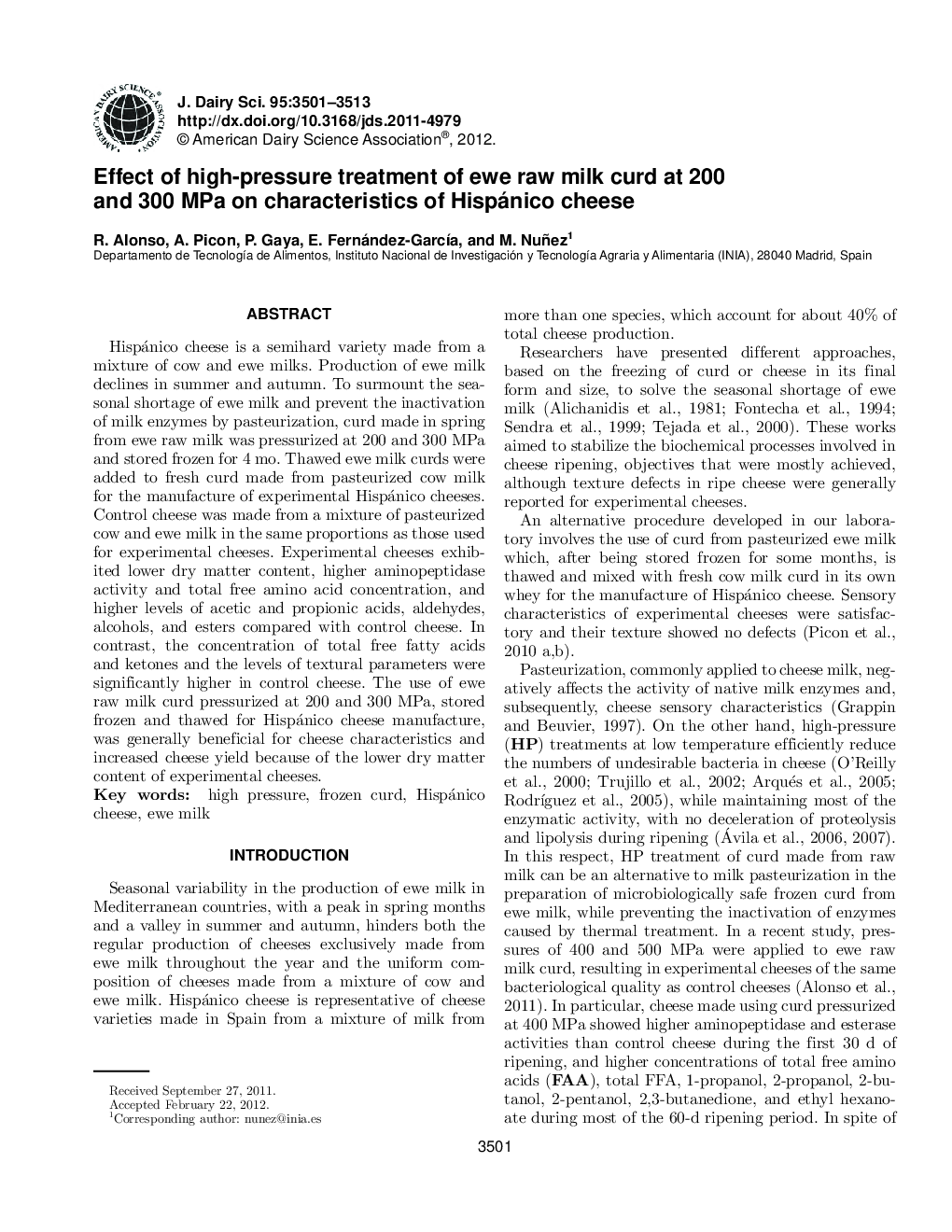| Article ID | Journal | Published Year | Pages | File Type |
|---|---|---|---|---|
| 10979640 | Journal of Dairy Science | 2012 | 13 Pages |
Abstract
Hispánico cheese is a semihard variety made from a mixture of cow and ewe milks. Production of ewe milk declines in summer and autumn. To surmount the seasonal shortage of ewe milk and prevent the inactivation of milk enzymes by pasteurization, curd made in spring from ewe raw milk was pressurized at 200 and 300Â MPa and stored frozen for 4 mo. Thawed ewe milk curds were added to fresh curd made from pasteurized cow milk for the manufacture of experimental Hispánico cheeses. Control cheese was made from a mixture of pasteurized cow and ewe milk in the same proportions as those used for experimental cheeses. Experimental cheeses exhibited lower dry matter content, higher aminopeptidase activity and total free amino acid concentration, and higher levels of acetic and propionic acids, aldehydes, alcohols, and esters compared with control cheese. In contrast, the concentration of total free fatty acids and ketones and the levels of textural parameters were significantly higher in control cheese. The use of ewe raw milk curd pressurized at 200 and 300Â MPa, stored frozen and thawed for Hispánico cheese manufacture, was generally beneficial for cheese characteristics and increased cheese yield because of the lower dry matter content of experimental cheeses.
Keywords
Related Topics
Life Sciences
Agricultural and Biological Sciences
Animal Science and Zoology
Authors
R. Alonso, A. Picon, P. Gaya, E. Fernández-GarcÃa, M. Nuñez,
